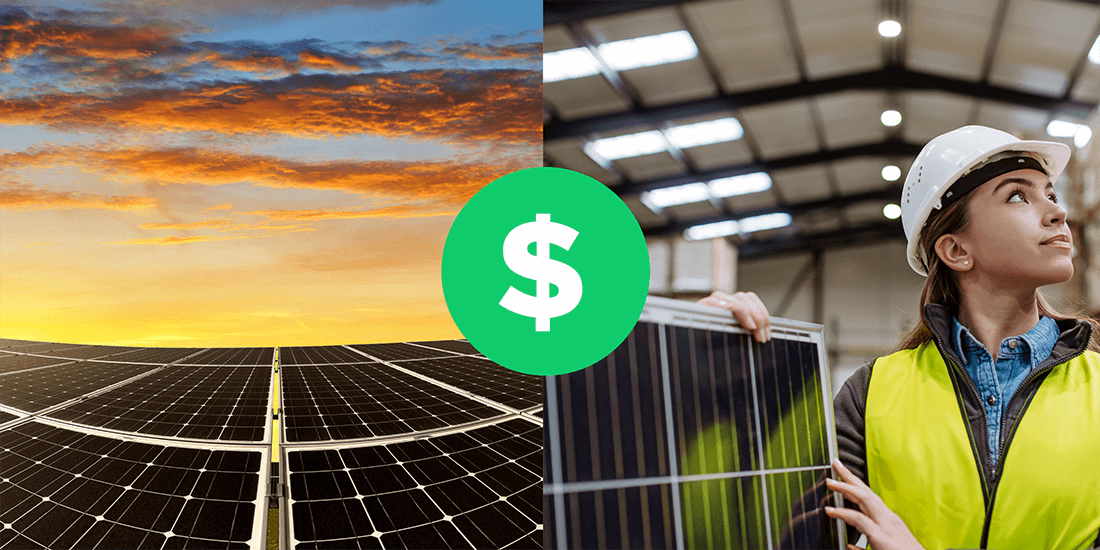How Much Does It Cost to Recycle Solar Panels?
pvsolar
on
May 29, 2025
At A Glance...
- The cost of recycling solar panels can vary widely based on numerous factors, including location, transportation logistics, and the composition of the panels themselves.
- Universities and institutions like the National Renewable Energy Laboratory and Arizona State University are actively researching ways to make recycling more efficient and cost-effective.
As the solar industry continues to grow and mature, a new question has emerged: what happens to solar panels at the end of their lifecycle? With most panels having a useful life of 20 to 30 years, we are now seeing an increase in solar panel waste. This has brought greater focus on solar panel recycling — a critical part of responsible waste management in the renewable energy sector.
Recycling solar panels involves more than simply collecting discarded equipment. The recycling process is complex and often energy intensive, as it must separate and extract valuable materials like silicon, silver, copper, and aluminum frames from each panel.
Despite the environmental benefits, the cost of recycling solar panels can vary widely based on numerous factors, including location, transportation logistics, and the composition of the panels themselves. Facilities that specialize in solar panel recycling use techniques that maximize material recovery rates and ensure that panels do not end up in landfills.
Universities and institutions like the National Renewable Energy Laboratory and Arizona State University are actively researching ways to make recycling more efficient and cost-effective. These efforts, paired with policies like extended producer responsibility, aim to ensure manufacturers take part in managing the environmental footprint of their products throughout their lifecycle.
A key reason for these efforts is the growing accumulation of panels that have reached or will soon reach the end of their lifespan. Panels that have been in use for 30 years are now entering the waste stream, creating a pressing need for scalable and affordable recycling methods that recover materials and reduce environmental impact.
The Cost Benefits Of Purchasing Solar Panels
While the financial and logistical challenges of recycling are important to consider, they shouldn’t deter individuals or businesses from investing in solar panels. In fact, the long-term economic and environmental benefits of solar far outweigh the initial costs — particularly when sustainability and future savings are factored in.
Solar panels contribute significantly to reducing dependence on fossil fuels, helping users transition to clean energy and reduce greenhouse gas emissions. Over a lifespan of 20 to 30 years, they generate emissions-free electricity, helping households and businesses cut down on their energy bills while contributing to broader climate goals.
From a financial standpoint, the ability to produce your own solar power lowers monthly electricity expenses and adds resilience to rising utility costs. When paired with storage solutions, solar systems can further protect users from peak pricing and energy shortages.
Moreover, solar energy is a sustainable alternative to depleting raw materials and non-renewable fuels. The adoption of solar technology helps accelerate the global shift toward renewable energy sources, which is essential for long-term energy security.
In terms of sustainability, it’s important to highlight that most of the components in solar panels — including glass, metals, and semiconductors — can be recovered and reused. These valuable materials can then be reintroduced into the manufacturing process, minimizing the need for new resource extraction and supporting a circular economy.
As the industry evolves, it is likely that we will see advances in solar technology and increased infrastructure. Additionally, regulatory frameworks that emphasize extended producer responsibility are encouraging manufacturers to design products with end-of-life recovery in mind, ultimately reducing the environmental burden and improving recovery efficiency.
Recycling Solar Panels In The US
At PV Solar Recycling, we offer cost-effective solar panel recycling solutions for businesses in the US. Our affordable, high quality services provide collections across various states in the US, ensuring solar panel waste is transported to licensed recycling facilities. Here, solar panels, inverters and batteries can enter the recycling process and be repurposed into new products for the market.


